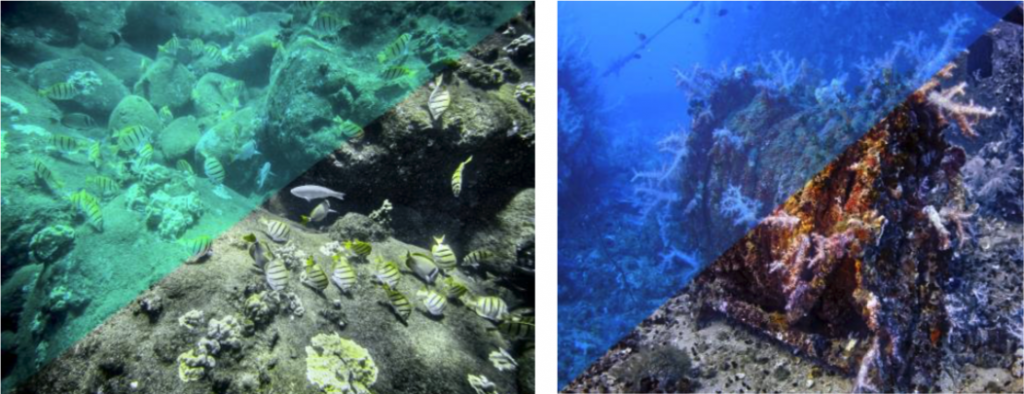| T3.3.1 Intelligent AUV mapping |
| T3.3.2 AUV-ASV Cooperation |
Lead: CORONIS, UdG
Optical imaging has a series of advantages over other sensor type, most importantly, high spatial resolution and colour/texture information. However, in the underwater environment, the range of optical sensors and the quality of the resulting data is affected by light attenuation and scattering. For this reason, we will develop a series of techniques based on image dehazing that will improve the quality of the optical data. The goal is to increase the efficiency and accuracy of online target recognition and view planning and online 3D mapping and quality control. In this context, we will develop and implement computationally efficient optical dehazing techniques. Dehazing algorithms use the physical model of the light transmission to (partially compensate for light absorption and scattering), improving image visibility, as illustrated in the images below.

